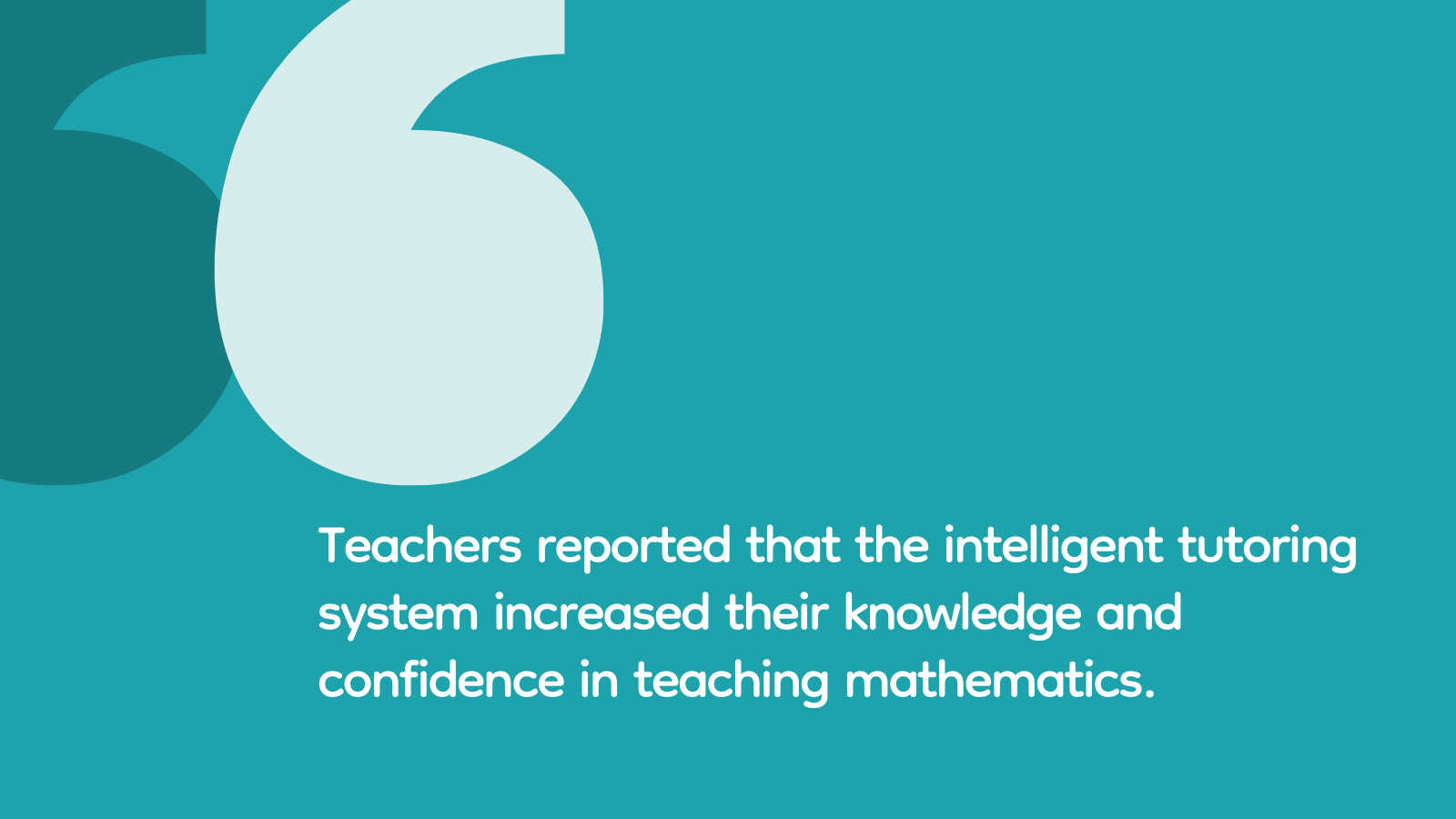New Research Says AI-Driven PD Boosts Teaching Quality


You might be surprised to hear this, but what if I told you that not all professional development (PD) programs impact teachers or even make a difference? Shocking, right? (I know many of you are not surprised.) Truth be told, in the teacher-quality research world, the actual meaningful effects of PD are normally null (re, these knockouts: Blazar et al. (2024), Harris & Sass (2011), Kraft et al. (2018). Yes, you read that correctly—dosage of teachers receiving PD normally doesn’t trickle down to positive test scores with students. Recently though, researchers partnered together to test a more innovative PD program to discover if it had more positive effects. Here’s what they found.
New AI-Driven Professional Development Improved Math Teaching Practices
Wow! I anticipated more null findings. The AI-driven PD utilized intelligent tutoring systems (ITSs) to offer personalized feedback and created an engaging, interactive learning environment for teachers. The PD used this type of just-in-time feedback for teachers to enhance their content knowledge and pedagogical content knowledge in math. Here are those specific key findings:
Key findings from Copur-Gencturk et al. (2024):
- Enhanced cognitive demand. Teachers in the AI-driven PD program selected more cognitively demanding tasks for their students compared to those who did not participate.
- Improved instructional coherence. The program helped teachers provide more coherent and conceptually focused math instruction.
- No significant difference in task implementation. While teachers selected better tasks, there was no notable difference in how they implemented these tasks during instruction.
- Positive teacher feedback. Teachers reported that the program increased their knowledge and confidence in teaching mathematics.
Can we trust this research?
Not all research is created equal! Here’s what our We Are Teachers “Malarkey Meter” says when it comes to this publication, based on four key factors.
- Peer-reviewed? Yes, multiple rounds of peer review have thoroughly examined and scrutinized the findings of this study.
- Sample size: This research included a relatively small sample size—52 teachers (29 in the treatment group and 23 in the control group). While this sample size provides some insight, it’s important readers recognize that larger studies may yield more robust results. Having been in this position as a researcher, I know they did the best they could with recruitment, but a sample size of 100 or even 1,000 would bring a lot more statistical power.
- Trustworthy sources: The study was conducted by emerging young researchers Yasemin Copur-Gencturk, Jingxian Li, and Sebnem Atabas. Together, they combine to have garnered about 1,500 citations worldwide for their works. This research was also published in the American Educational Research Journal. Getting published with AERJ is tough, so we know this research has been scrutinized!
- Methodology: The researchers used a randomized controlled trial—something us researchers like to nickname the “Golden Standard.” Random assignment of teachers as to who received the AI-PD and who did not can help control for potential biases that could skew results. From there, they could utilize simple regressions (Hey, Algebra I teachers—I’m talking to you! Line of best fit!).
What does this mean for teachers?
This research suggests that integrating AI into PD programs could enhance teachers’ instructional practices in mathematics, therefore trickling down to student outcomes. By participating in a customized AI-driven PD program, teachers can:
- Gain personalized feedback and support tailored to their specific needs.
- Improve their ability to select and implement high-quality instructional tasks.
- Provide more coherent and conceptually rich instruction to their students.
Dr. Copur-Gencturk told We Are Teachers this about their research:
Teachers can significantly enhance their students’ learning by focusing on the foundational ideas behind math standards, particularly ratios and proportional relationships. By understanding common challenges students face and adjusting instruction accordingly, teachers can help students connect concepts across standards, leading to a deeper and more flexible understanding. This approach not only boosts student achievement but also helps teachers manage classroom demands more effectively.
Dr. Copur-gencturk
While traditional professional development often falls short of impacting classroom practices significantly, the study by Copur-Gencturk et al. (2024) introduces a promising approach with AI-enhanced PD that improves how teachers teach. This research demonstrates potential in using AI to elevate the quality of teaching through thoughtful, interconnected instructional strategies. However, we still need to see whether these improvements translate into student achievement. As AI-driven PD evolves, its ultimate value will hinge on clear evidence of benefits to student learning, ensuring that innovations in teacher training truly enhance educational outcomes where it matters most.
Looking for more articles like this? Be sure to subscribe to our newsletters!
Source link




